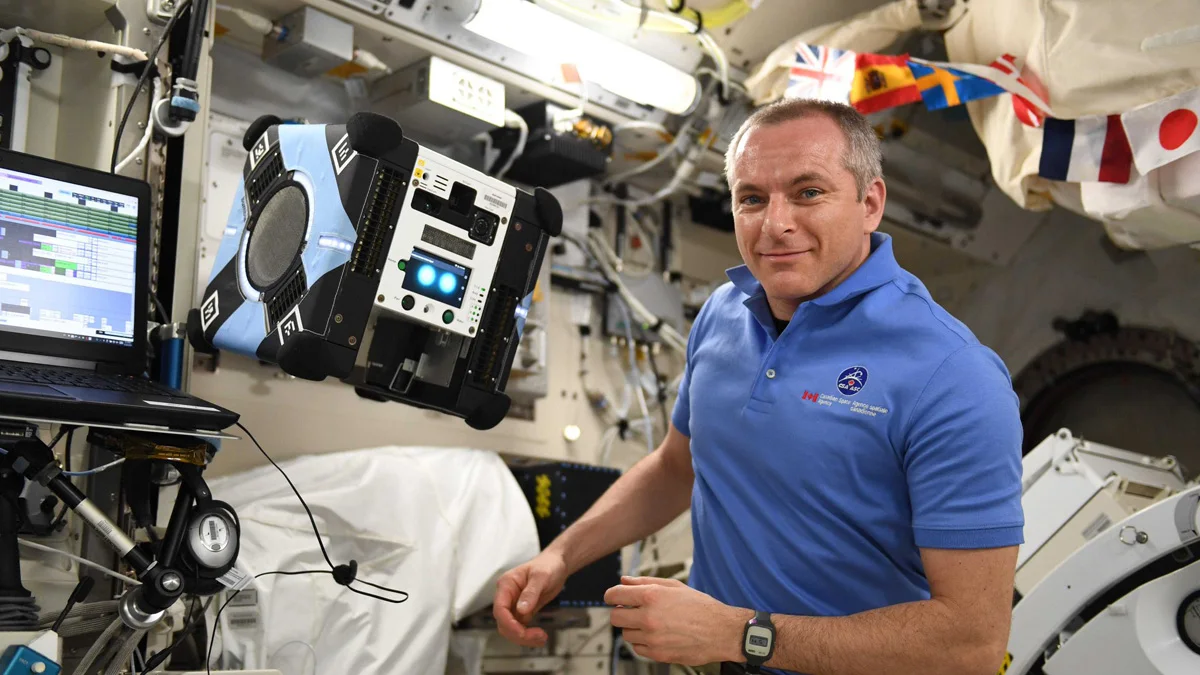
Canadian astronaut David Saint-Jacques makes 'punishing' return to Earth
Watch LIVE as Canadian astronaut David Saint-Jacques returns home after his stay aboard the International Space Station
David Saint-Jacques has return to Earth as of Monday night, along with NASA astronaut Anne McClain and Russian cosmonaut Oleg Kononenko. Their ride would have been anything but smooth, however.
After a record-setting 204 days in space - that's the longest a Canadian has ever spent in orbit, over six and a half months - these three 'spacelings' packed up their belongings and by the end of the day, on Monday, they had their feet firmly on the ground again.
Before they landed, however, their ride was what retired Canadian astronaut Chris Hadfield could only describe as "punishing".
When a Soyuz capsule returns to Earth, it plunges into the upper atmosphere travelling at a speed of around 28,000 km/h. As the heat shield takes the brunt of slowing them down, it basically causes an eruption of flames that lick against the side of the capsule, clearly visible to the astronauts inside through the viewports. Once they have slowed sufficiently, there's the jarring deployment of parachutes, which slow them even further as they descend towards the ground, and there's a quick blast of the 'soft landing' jets, at the bottom of the capsule, just before they touch down, to cancel what's left of their momentum.
As Commander Hadfield relates, even then, there's likely the rolling they'll endure before the capsule finally comes to a stop on the Kazakhstan steppe.
Watch the hatch closure, the undocking sequence, and the reentry and landing, directly from the NASA TV livestream, embedded below:
Now comes recovery for the astronauts, as they adjust from being "spacelings" back to being "Earthlings".
Crewmembers on board the International Space Station stay in peak condition while orbiting Earth, as they each go through a thorough workout routine every day they are in space. While this prevents the worst effects of microgravity from taking hold, since astronauts are not constantly putting stress on their bones, as they would here on Earth just by sitting, standing or walking, they tend to lose an average of 1 per cent of their bone mass for every month they are in orbit.
Going from micro-gravity to Earth gravity in the span of a few hours is rough. The full effects of it certainly depend on the age and health of the astronaut. NASA astronaut Scott Kelly, for example, when he landed back in the United States, just hours after touchdown from his year-long mission, appeared to be easily standing and walking, as he met with reporters to answer questions. He still had months of recovery time ahead of him, however.
According to NASA, Saint-Jacques, McClain and Kononenko closed the Soyuz hatch at 4:10 p.m. EDT, and undocking of the Soyuz from the station occurred at 7:25 p.m. EDT.
After another two orbits around Earth, roughly, the crew began the brief reentry burn, which started at 9:55 p.m. and the Soyuz then landed at 10:48 p.m., right on time.
WHILE YOU'RE UP
Staying up late to watch the return of David Saint-Jacques?
Right after the Soyuz touches down, tonight, NASA will have live coverage of the next SpaceX Falcon Heavy launch from Kennedy Space Center.
Several missions are launching on this flight, including the Constellation Observing System for Meteorology, Ionosphere and Climate (aka COSMIC-2), which promises to improve weather forecasting, the Deep Space Atomic Clock, a satellite which will test using atomic clocks for space navigation, and The Planetary Society's new LightSail 2 solar sail.
Watch the Falcon Heavy launch, live, below:
Although the launch was scheduled for late Monday night, it was delayed until 2:30 a.m. EDT on Tuesday.
The flight of Lightsail 2 is a dream decades in the making, with Planetary Society co-founder Carl Sagan first discussing such a project on the Tonight Show with Johnny Carson in 1976. In 2015, Lightsail 1 launched into orbit on a test flight, with mixed results. Having learned so much from that first attempt, however, Lightsail 2 is expected to really put this method of space propulsion to the test!
Source: NASA | NASA | National Space Centre






